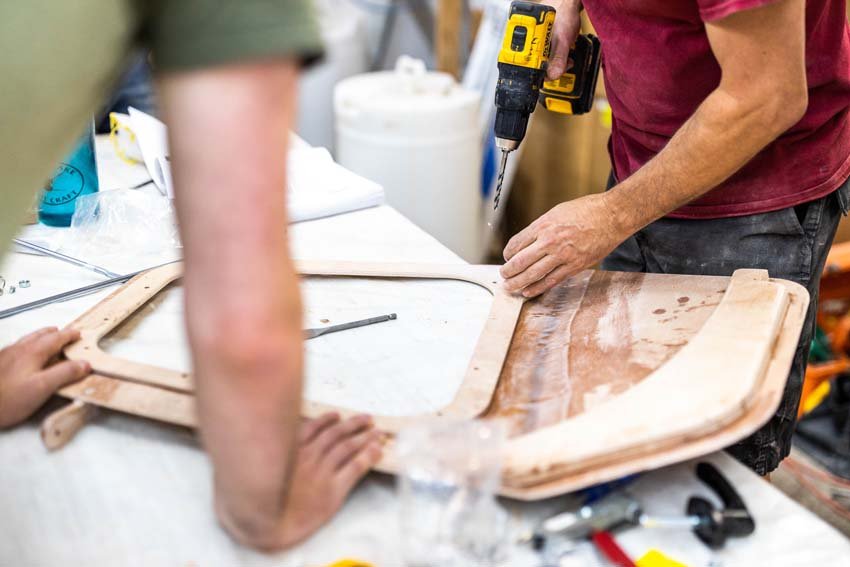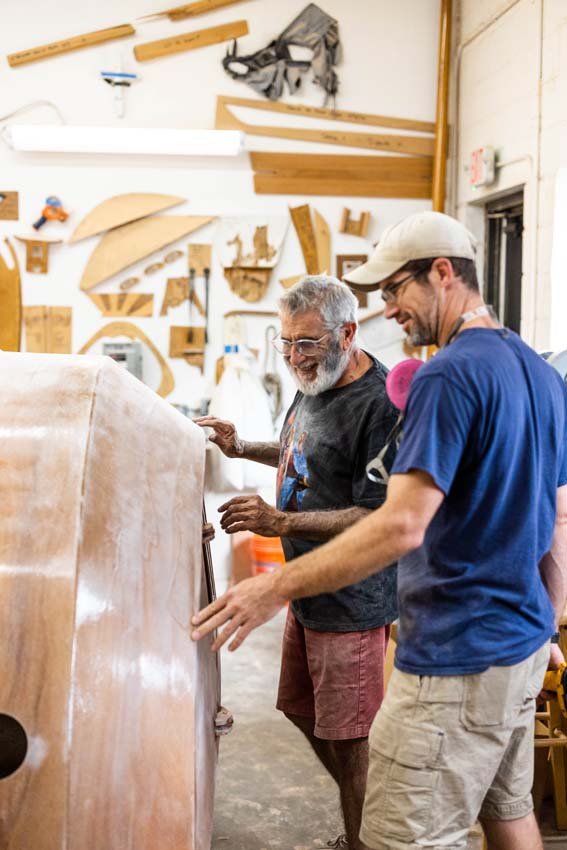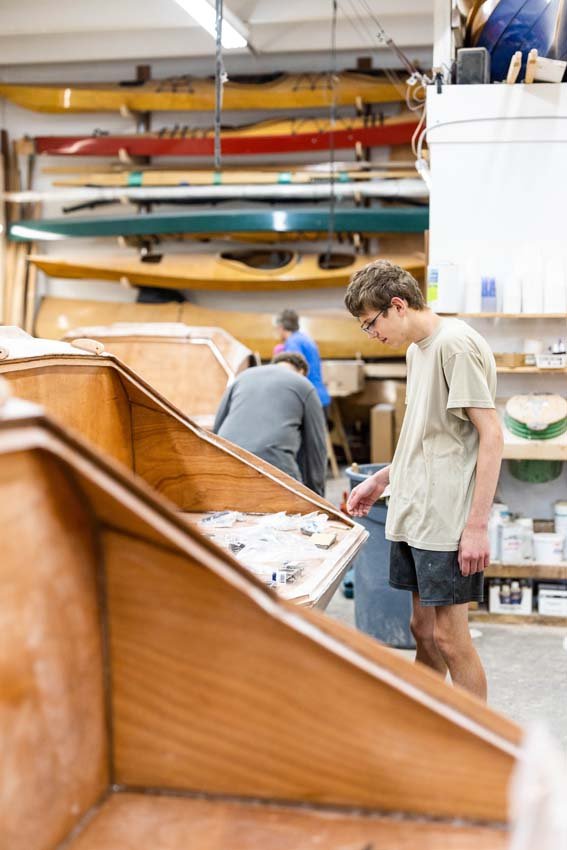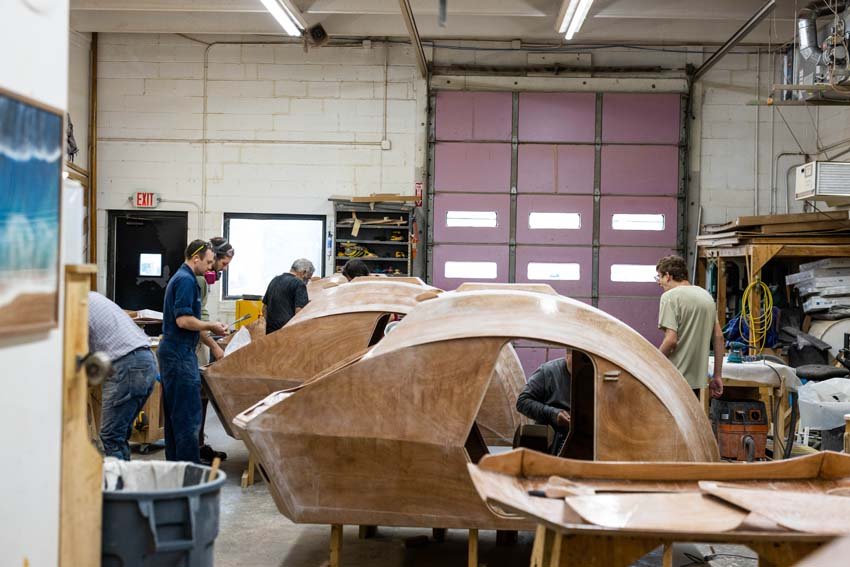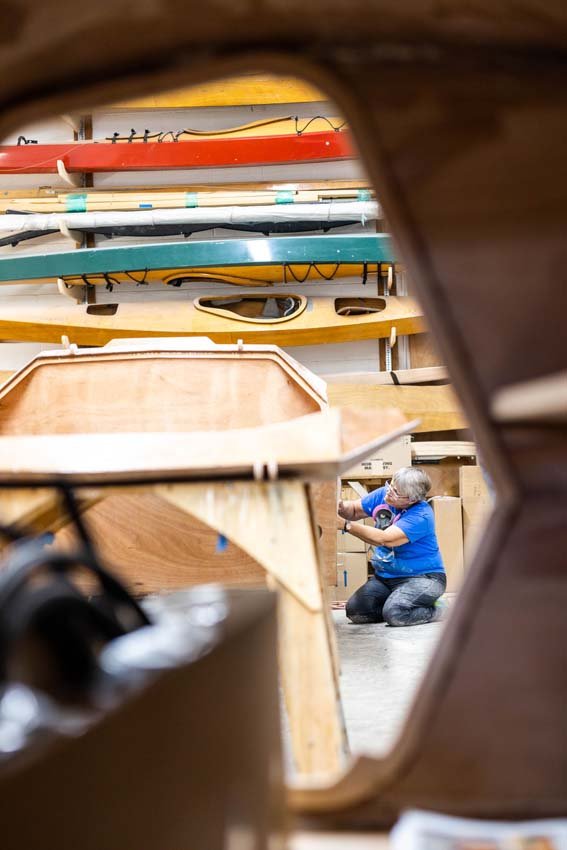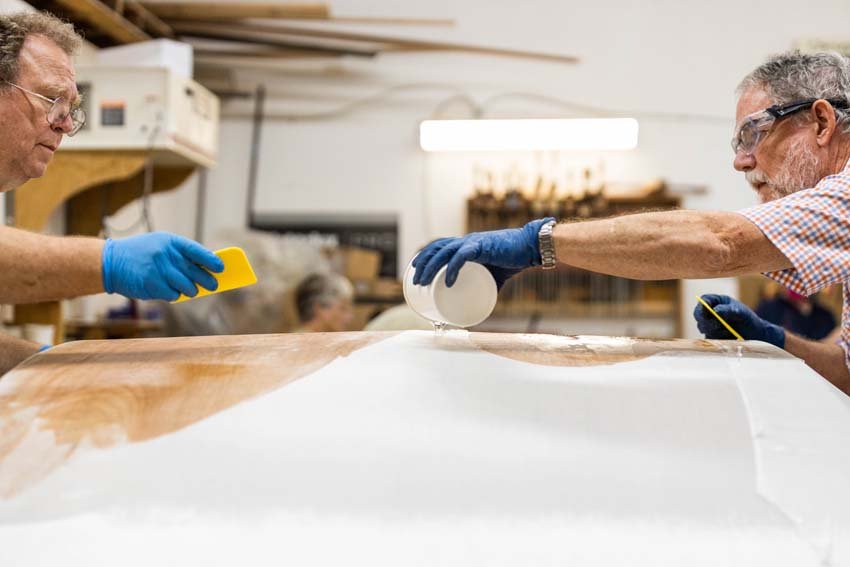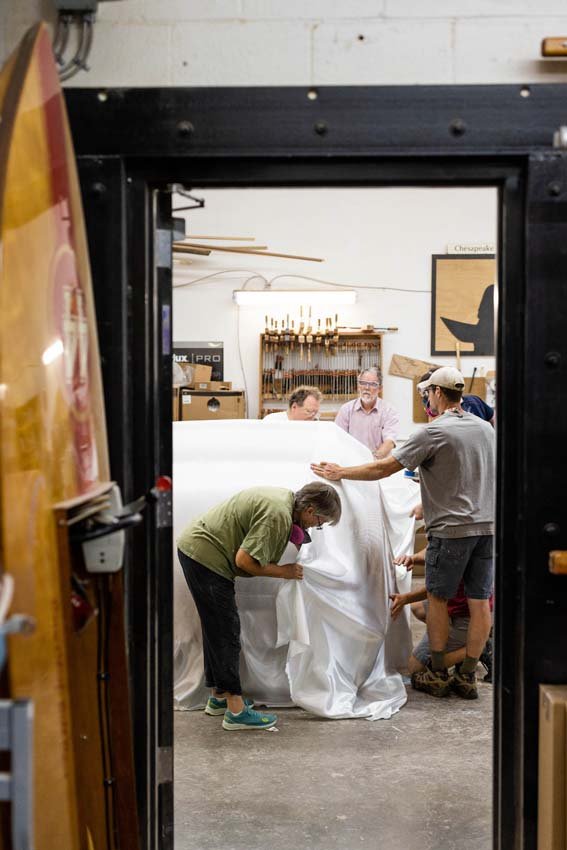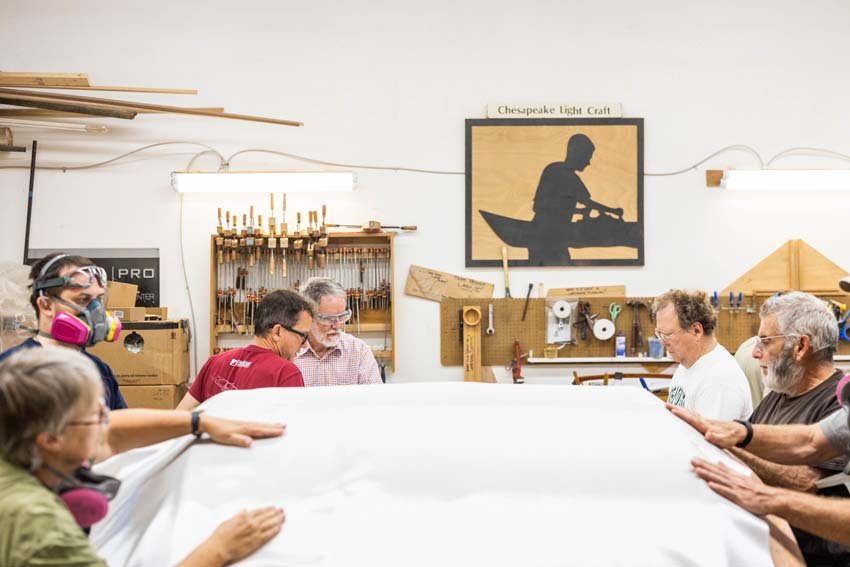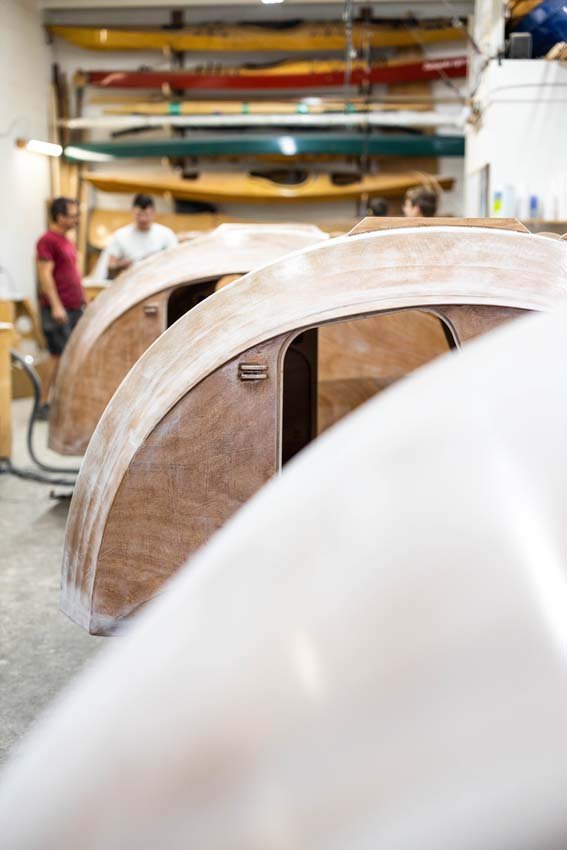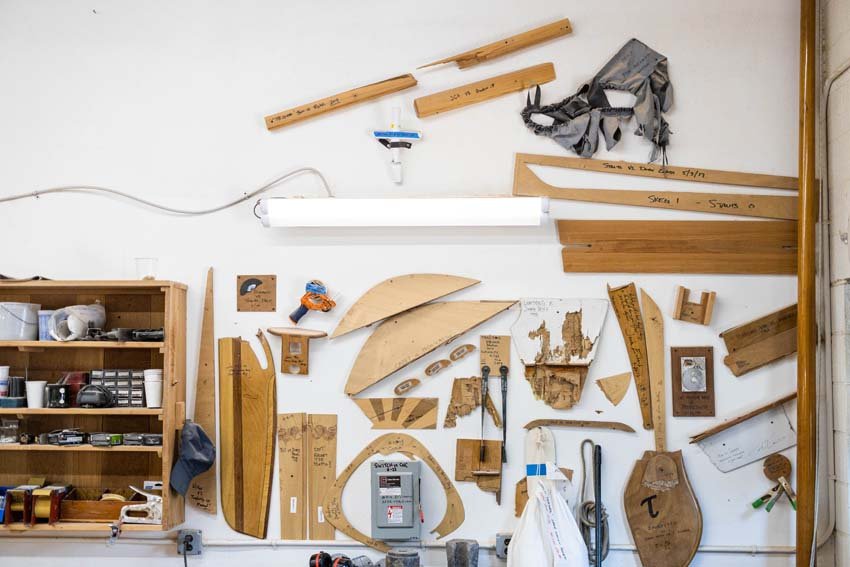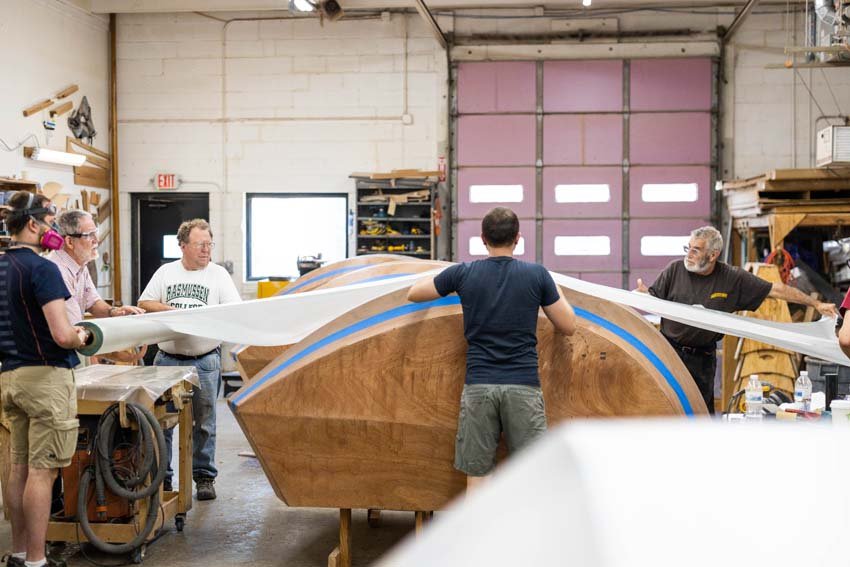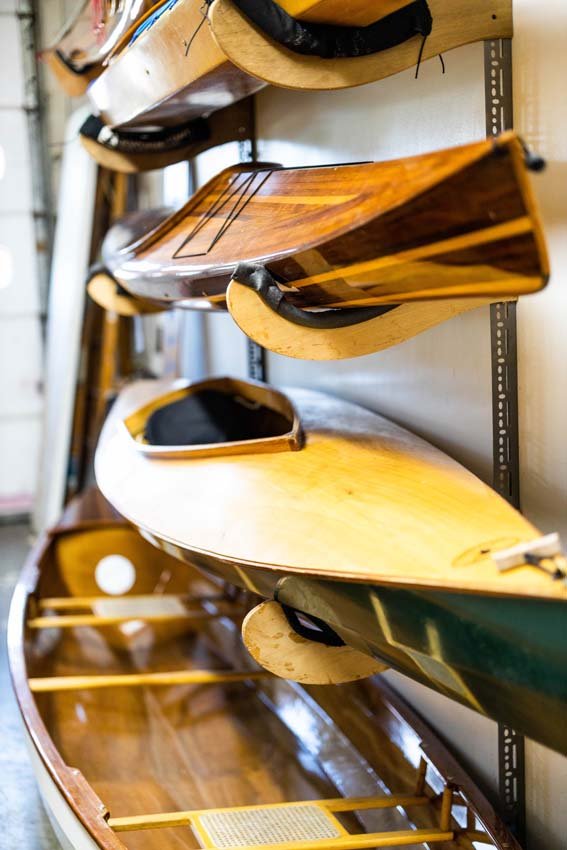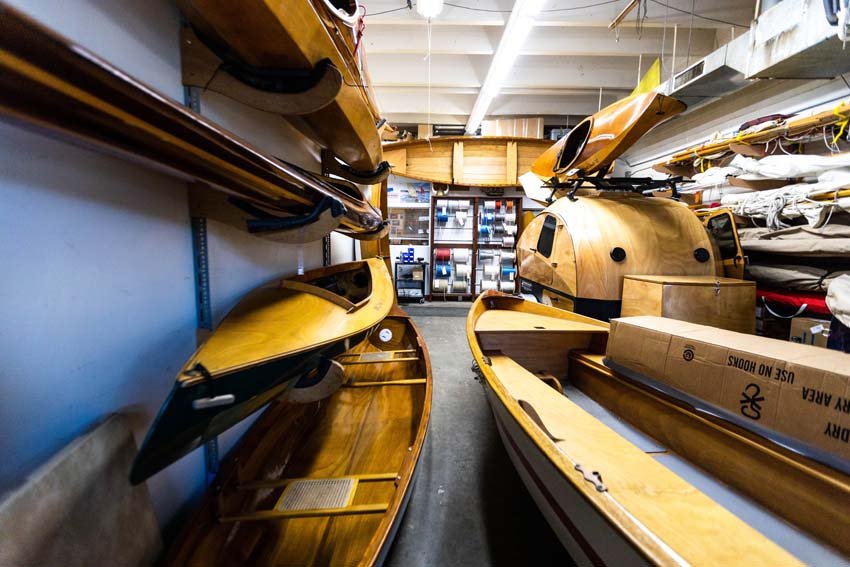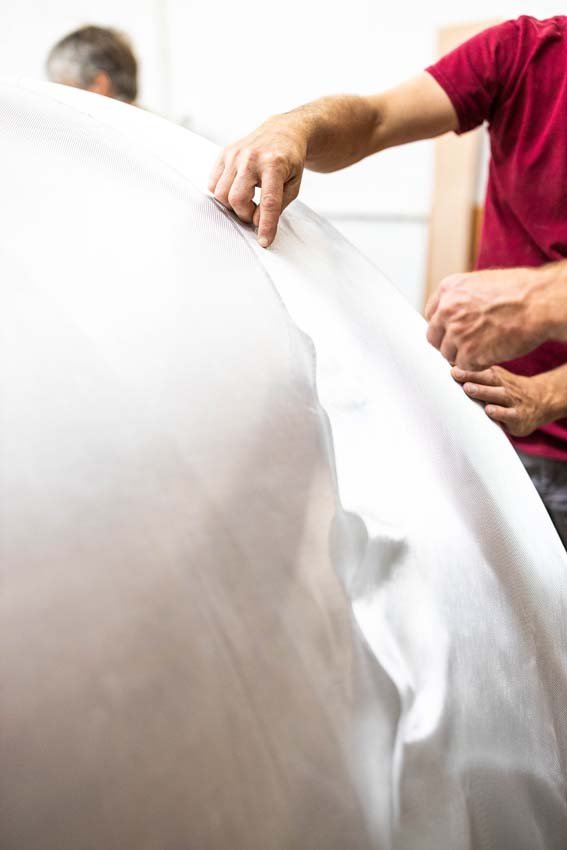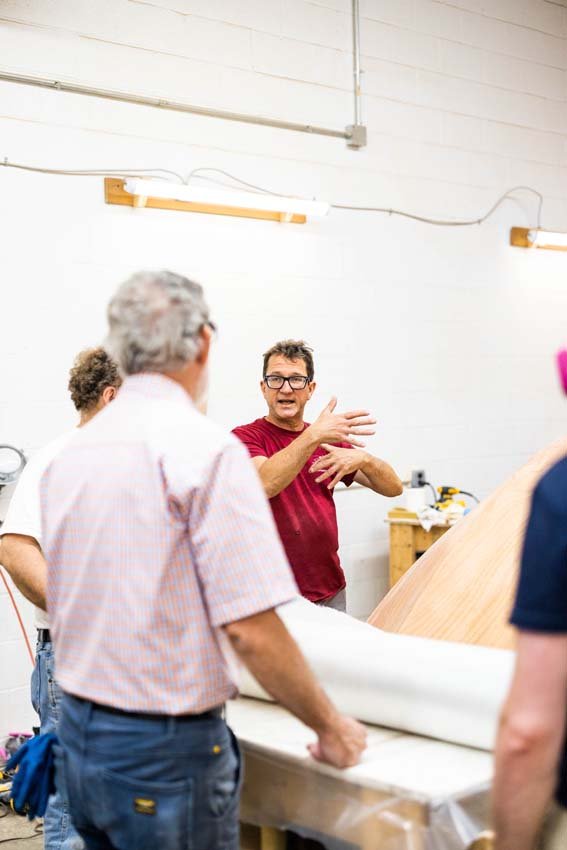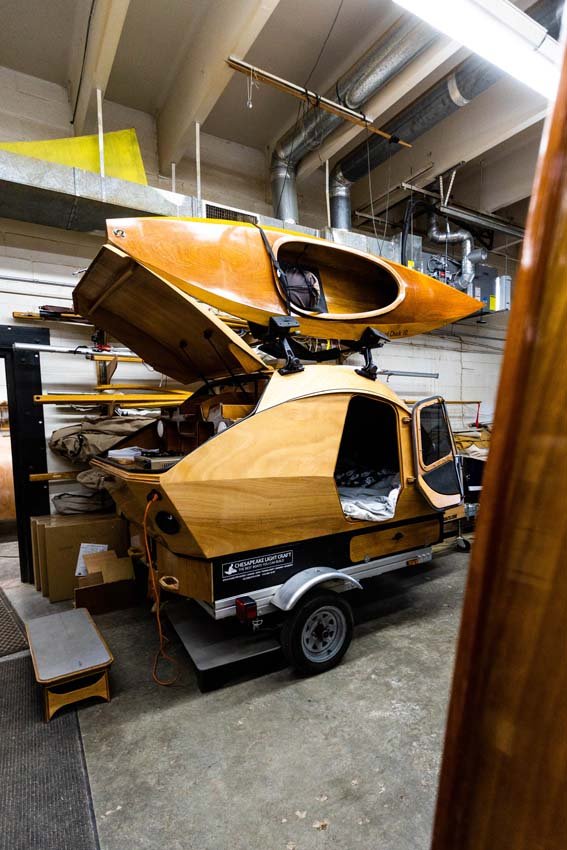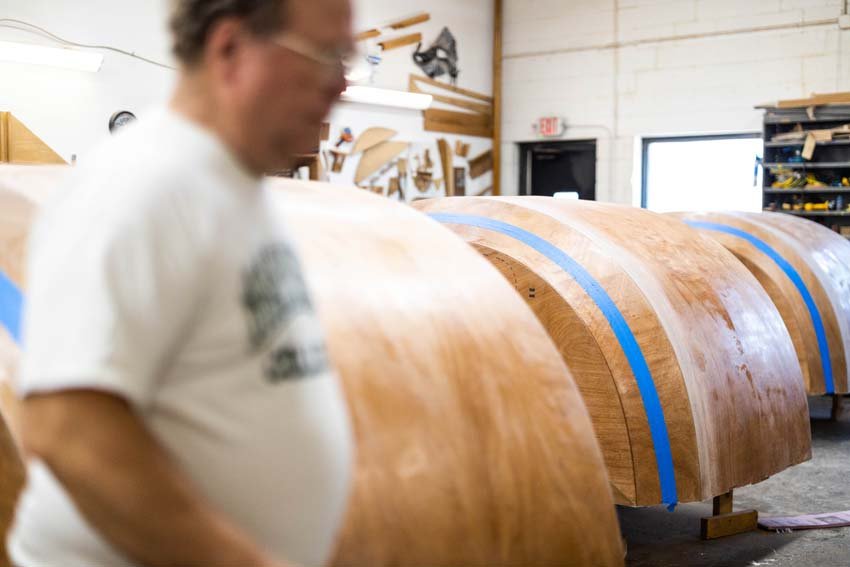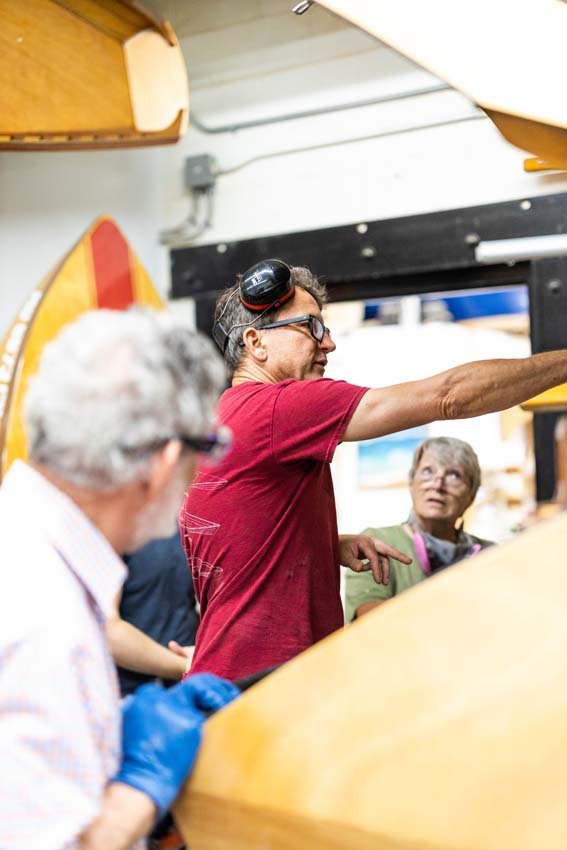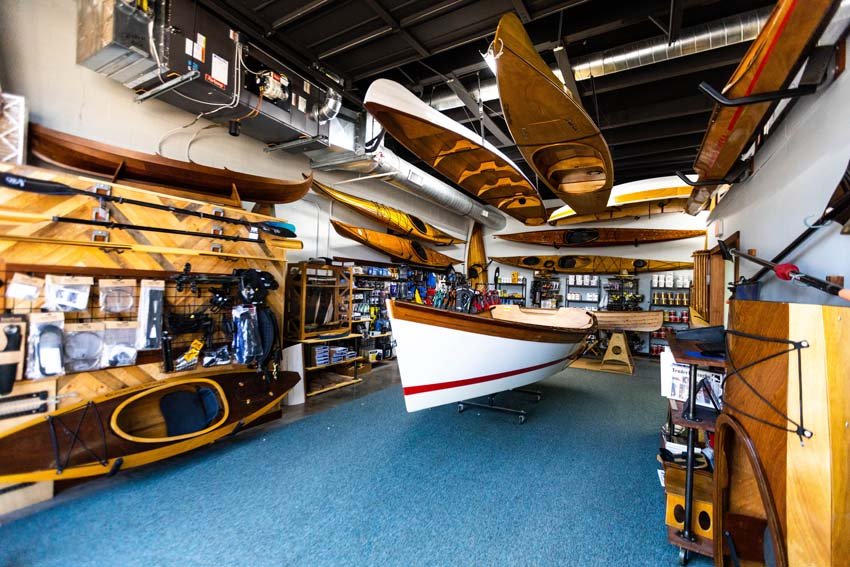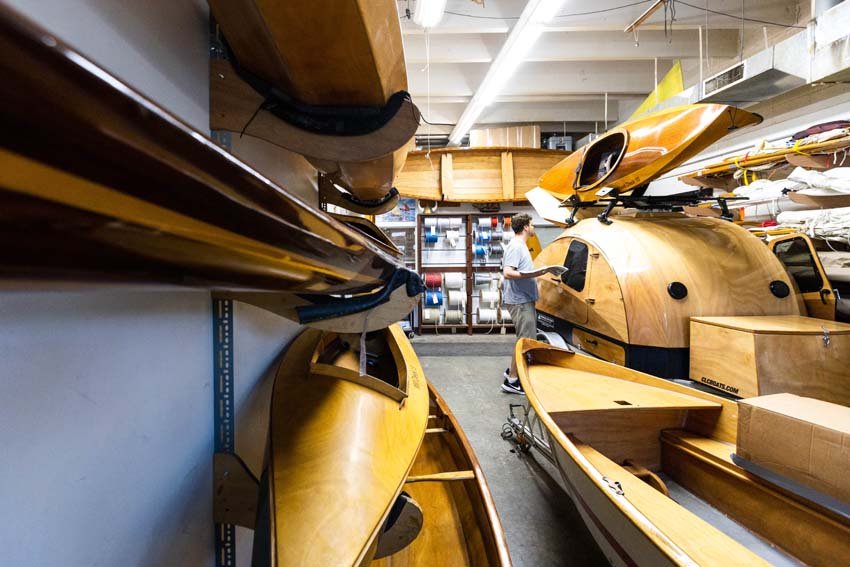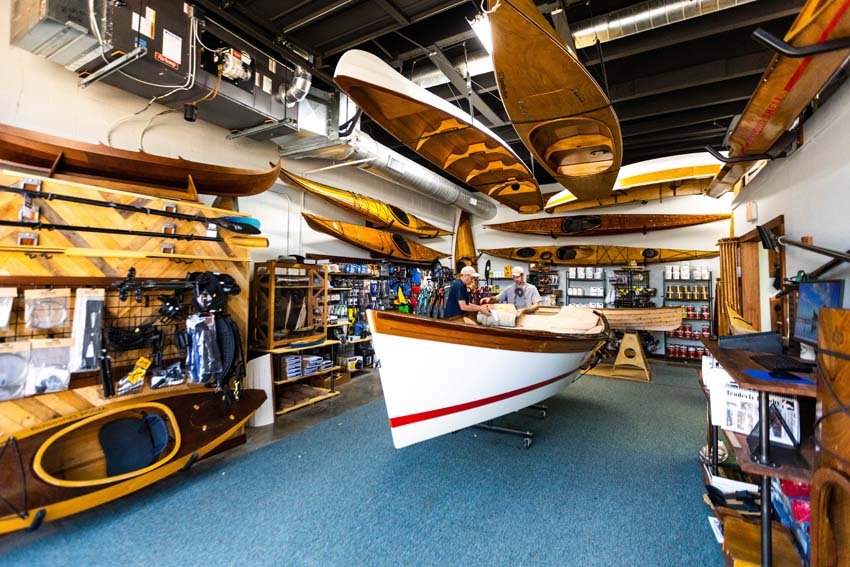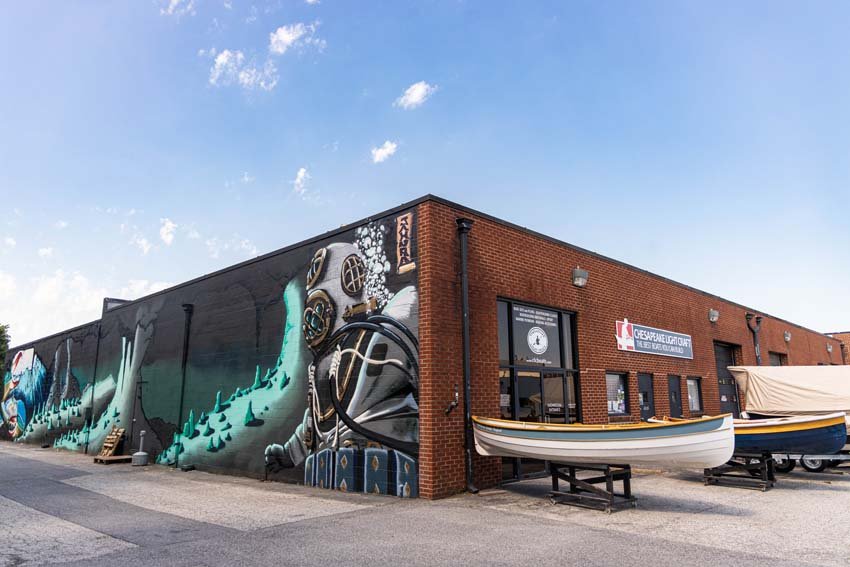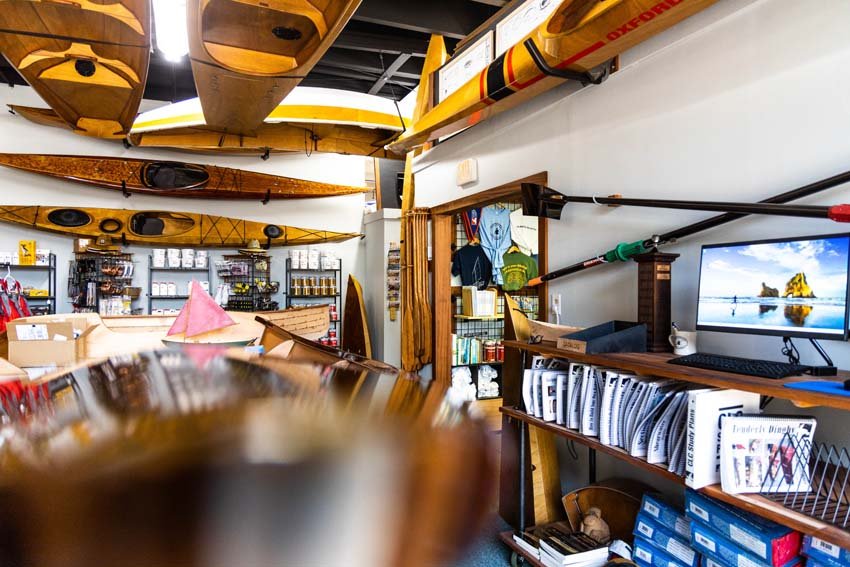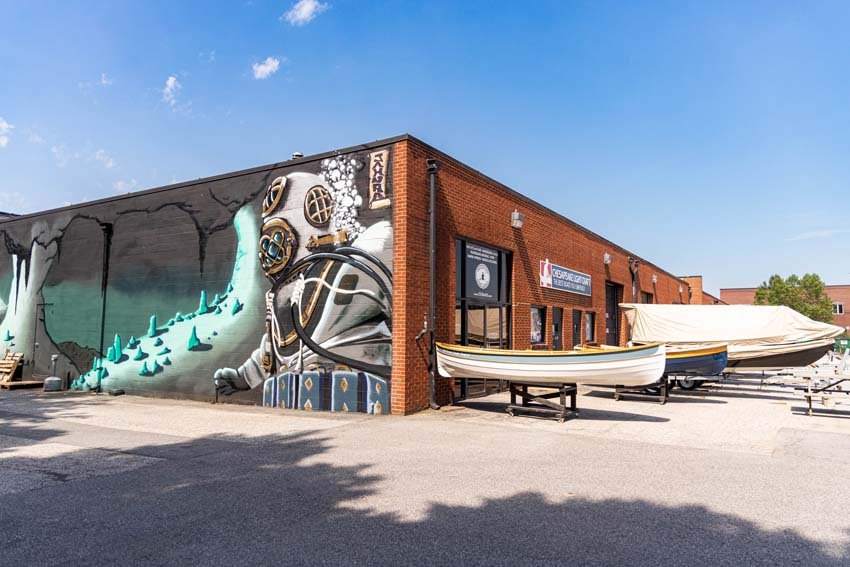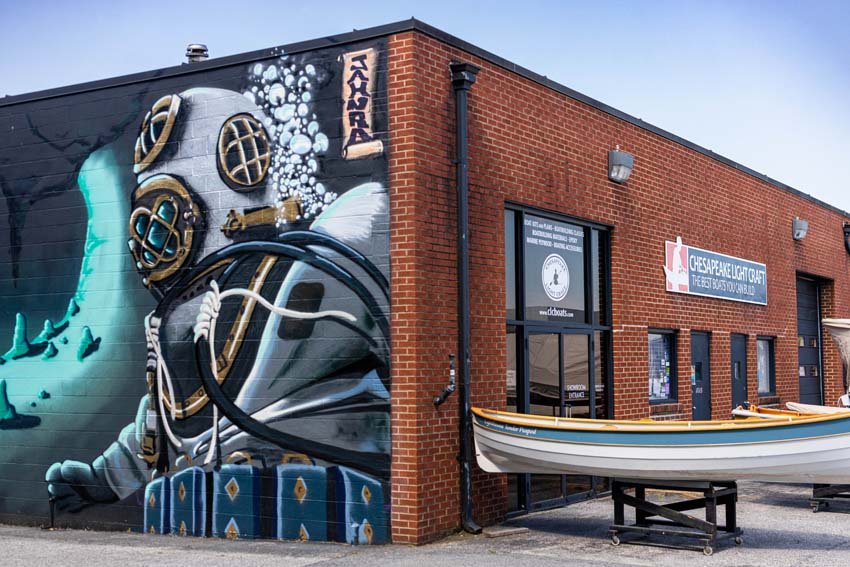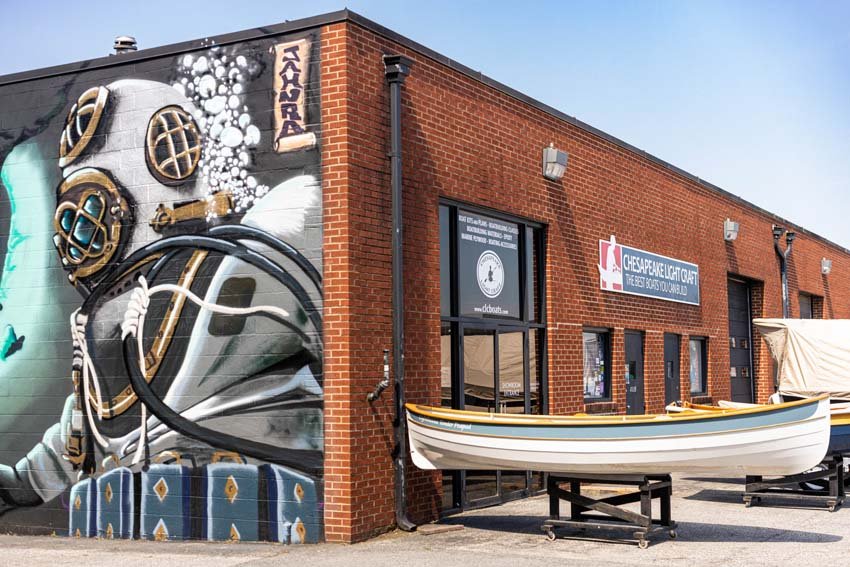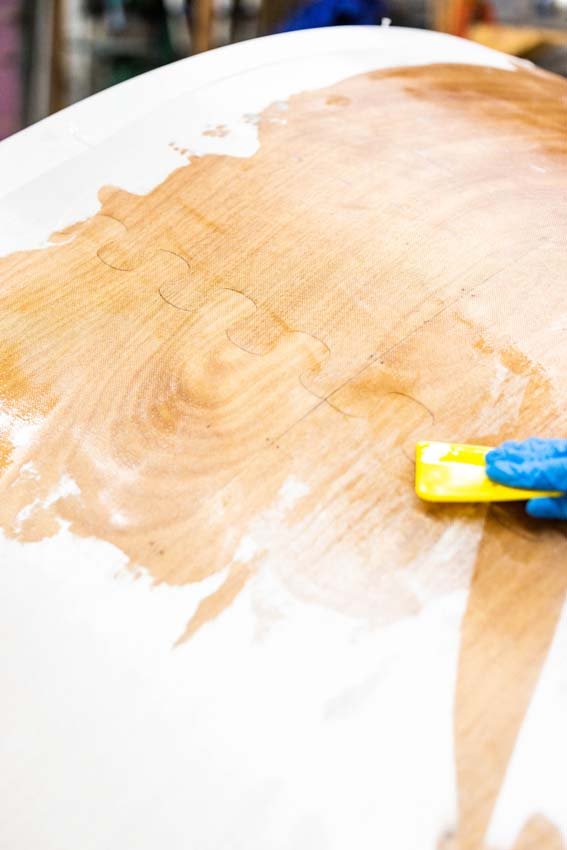+ By Dylan Roche + Photos by Mary Ella Jourdak
“First of all, you have to be a little bit crazy,” says John Harris, owner and managing director of Chesapeake Light Craft, about building your own boat. He also explains that the idea of amateur boatbuilding isn’t new. “I can find magazine advertisements for boat kits to build at home going back to around 1900,” he adds.
In Annapolis—unofficially hailed by many as America’s sailing capital—the art of boatbuilding remains accessible to amateurs, thanks in part to Harris’ company, which specializes in original, award-winning designs for boats, canoes, rowboats, dinghies, sailboats, and even teardrop trailers. And it’s not just for the benefit of Annapolis; Chesapeake Light Craft reaches boatbuilders all around in the world.
Over the nearly three decades that it has provided boaters and crafters with this hands-on experience, the company has sold 40,000 boats to people in 70 different countries. “This is kind of the golden age, in a way,” says Harris of amateur boatbuilding. It existed as a hobby throughout the twentieth century but started losing momentum in later decades, as newspaper advertisements made it easier for people to buy boats instead of making their own.
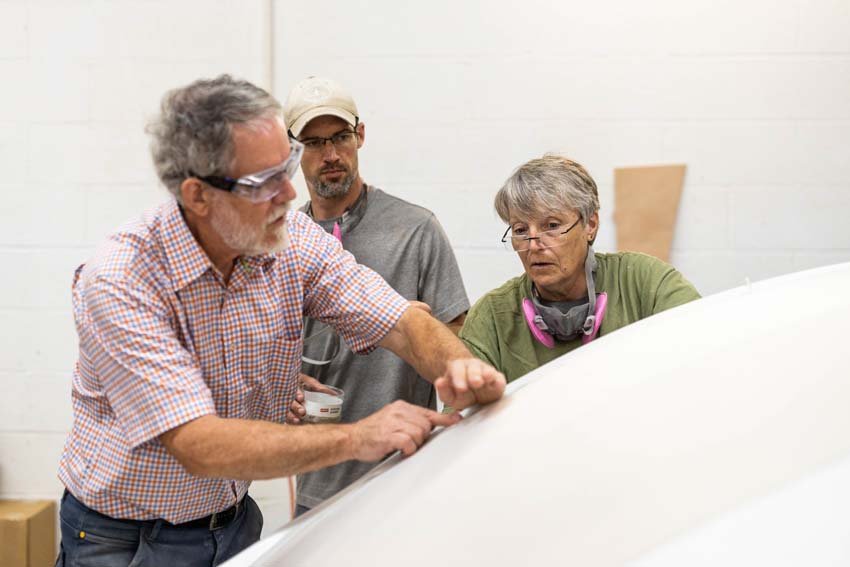
By the time Chesapeake Light Craft opened, in 1994, boatbuilding was poised to have what Harris describes as a second wind, thanks to the advent of the internet, which empowered people to realize that they could build their own boats. There was also a growing interest in recreational activities such as kayaking and camping.
Although many of the company’s patrons could simply buy their own boats, they choose not to because they are looking for something more. “We’re not just selling somebody a boat, we’re selling somebody an experience,” says Ed Wigglesworth, the company’s president. “You’re just learning this whole thing and creating something . . . It’s kind of like art, teaching them the building process.”
Both Harris and Wigglesworth understand firsthand the satisfaction that comes from such a project. Harris took to boatbuilding at a young age. “I was one of those kids—and I’m learning that I was very rare this way—but I knew I wanted to build a wooden boat when I was tiny, between 5 and 10,” he says. “As a 12-year-old, I was drunk on the idea of boats, sailing, and kayaking and rowing, and everything about it.” He dedicated himself to this hobby through his teenage years. After college, he was one of the first employees at the newly formed Chesapeake Light Craft, and he helped develop many of the early designs. Before he turned 30, he owned the company and built the business. “One day at a time—or, you know, that’s what it feels like,” he says.
Similarly, Wigglesworth has worked with boats his entire life, having grown up locally along the Severn River in Severna Park. Before he joined Chesapeake Light Craft in 1997, he was in the automotive industry. Between his love for boating and his experience with cars, he says that watercraft and creating things were in his blood. “This was just a natural fit for me,” he recalls. His years with Chesapeake Light Craft have honed his apperception for both. “I probably look at boats differently from the way a lot of other people look at them,” he says. “I understand what goes into creating a boat, from concept to design, and all the way through the construction process.”
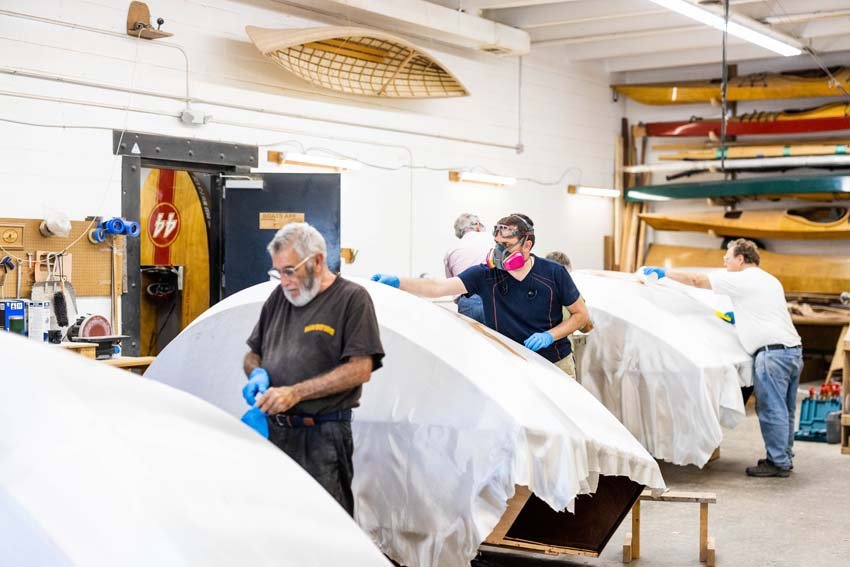
The idea of building a boat may not sound like an amateur hobby to most people. Harris and Wigglesworth often hear the same question from apprehensive customers: “Can I really build a boat myself?” It isn’t necessarily about skill set but rather, personality and tenacity. Wigglesworth thinks that a successful boatbuilder is someone who has a willingness to see something through, as there are many steps to the process and shortcuts are not an option. Harris agrees. “You’ve got to be patient,” he says. “There are impatient people in the world, believe me, and they should not try to build even the easier ones.”
In fact, Chesapeake Light Craft specializes in first-timers, people who have neither built a boat nor considered the prospect, and Harris explains that the company aims to be a gateway in this regard. Moreover, so many people who get into boatbuilding take such a liking to it that they keep coming back for more. That’s why the team at Chesapeake Light Craft keeps adding to its catalogue, offering kits for boats that require a little more expertise. After customers finish their first boats, they can come back for their second and third.
To appeal to first-timers in this way—and keep them reveling in the artistry and craftsmanship for life—Harris and Wigglesworth ensure that the steps remain easy to follow. That’s been the goal since the company opened: making boatbuilding accessible. “Even in my comparatively modest experience at that time, I’d already known lots of people who had built their own boats and shared their frustrations,” says Harris.
Accessibility means straightforward instructions with clear steps and illustrations to show how it’s done. While there aren’t any hard steps, there are many of them, sometimes 80 or 90 in total. For those who aren’t dedicated or patient, it can sometimes be a tedious process. “It’s a commitment, even for some of the smaller boats,” says Harris.
A kayak, small canoe, or paddleboard can take up to 80 hours to complete. A larger craft, such as the Peeler skiff, could take more than 250 hours, and could take months or even years, depending on how a person manages their time. But it is not always about how fast it can be done. “It is about enjoying the process of the build,” says Wigglesworth. “There has always been a segment of customers that casually build over months or years. These are the types that will always have a project or 2 or 10 going on. . . . We often hear how some customers think of their time building as a therapy session, getting lost in sanding or working out how a part fits.”
Open minds and curiosity really help—those who ask questions tend to be the most successful. Basic woodworking skills are useful but not necessary, and Wigglesworth finds that people with technical backgrounds, such as carpenters and engineers, tend to have more technical questions than first-time amateur builders. “While sometimes their technical background can be helpful, it does not always translate to boatbuilding and can cause them to question the process or a step,” he explains. “On the other hand, the first-time builder will roll along, following the steps without question, to a perfect result.”
As for tools, most crafters and builders already have everything that they need. “We tried to design boats that don’t require elaborate machinery,” says Harris. “You need a sander, a pair of sawhorses, and a whole bunch of spring clamps.” For anyone in need of a little extra guidance (or even a lot of it), classes are available year-round so that newbies can get hands-on instruction from experienced boatbuilders instead of following the instructions on their own. This helps them overcome any doubts they might have about their ability.
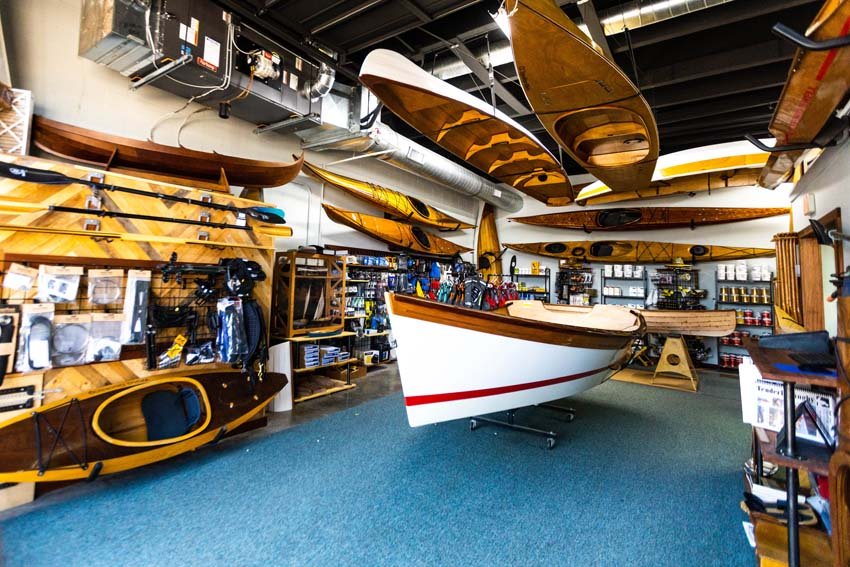
A substantial benefit of amateur boat and trailer building is the large variety of available models and styles. If a person cannot find a particular craft, then it can be built. Harris describes a kayaker who might want a fast kayak for certain wave conditions, with a length of six feet, eight inches. “You’d be out of luck, finding that boat in the marketplace,” he says. “But you’d certainly find a boat like that in our catalogue. That’s the beauty of the amateur world. You get exactly what you want.”
Chesapeake Light Craft’s catalogue of available watercraft and teardrop trailer kits, as well as more information about amateur boatbuilding, can be found online. To gain an even better appreciation, boaters and crafters can stop by the showroom. “I invite people, whenever they’re in the area, in to see what we do,” says Wigglesworth. A tour of the showroom is like walking through an adult’s toyshop—it brings out the child in everyone who walks through the doors. █
For more information,
visit clcboats.com.

